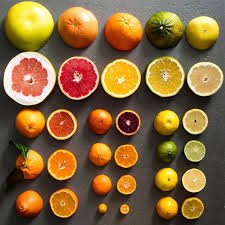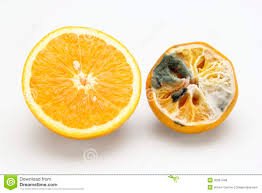Continuous Income Through Commercial Orange Farming
Orange trees are the most commonly cultivated fruit trees in the world. Oranges are a popular fruit because of their natural sweetness, wide variety of types and diversity of uses, from juices and marmalades to face masks and candied orange slices. Orange is the largest citrus crop in the world and one of the commonest fruits eaten by household members thus making orange plantation not just a lucrative business but also one that ensures continuous stream of income. Although the fruit is very common, not much consideration has been given to orange commercial farming in this country as a means of earning continuous streams of income. However, the truth is that it is a sure way of making money every year as long as the tree continues to bear fruits.
The nutrients in oranges offer a range of health benefits. Orange is a very important fruit because of its invaluable health benefits. Oranges are low in calories and full of nutrients, they promote clear, healthy, skin and can help to lower our risk for many diseases as part of an overall healthy and varied diet. For instance, it contains Vitamin C that protects cells by neutralizing free radicals; photochemical that protects against cancer, including that of the skin, lung, breast, stomach and colon. It helps to prevent kidney diseases, lowers cholesterol, among other medicinal properties too numerous to mention here.
In Nigeria Benue State is the largest producer of sweet oranges. However, almost 90 per cent of the produce is lost to lack of storage and processors. According to Food and Agriculture Organisation statistics, Nigeria produces about 3.4 metric tons of citrus fruits annually from about 3 million hectares of land, making it the 9th global producer and the largest producer in Africa, followed by Egypt, Morocco and South Africa.
The major producing states in Nigeria are Benue, Nasarawa, Kogi, Ogun, Oyo Osun, Ebonyi, Kaduna, Taraba, Ekiti, Imo Kwara, Edo and Delta.
VARIETIES

image source
There are three varieties of orange – sweet oranges, bitter oranges, and mandarins. Sweet oranges are the most important fruits in the world. The sweet orange (Citrus aurantium var. sinensis) is not to be found in the wild. It is a hybrid, although of which two types there is much conjecture. Most sources seem to settle on the marriage between the pomelo (Citrus maxima) and the mandarin (Citrus reticulata). Most of the sweet oranges produced in the country are eaten fresh but can be used in making canned juice, or used to produce single strength juice, rind oil, frozen concentrate, pectins etc. The orange juice can also be extracted and used in food items flavours. There are also three groups of sweet oranges. Common oranges are the largest group of sweet oranges. They are sold as fresh fruit and almost all orange juice comes from common oranges. The valencia orange, the most popular orange in the world, is a type of common orange. Others varieties are hamlin, jaffa, marrs, parson brown, pineapple and trovita.
Bitter or sour oranges are said to have originated in India and are mostly grown in Europe. They are are used for making marmalade and orange-flavored liquors while mandarins also called tangerines are smaller, flattened looking and are sweeter than sweet oranges. There are many varieties of mandarins. However, this piece is all about sweet oranges.
GETTING STARTED

image source
Going into the agricultural business of planting oranges is good but it’s better to have the knowledge of the necessary requirements that will make you succeed; such things like the best soil type, the climate conditions and more as are discussed below:
You need to acquire some acres of land for orange plantation
image source
where you can plant about a hundred plants of orange to yield about eight to 10 bags of orange to give you about N80,000 to N100,000. Oranges thrive in warm regions where there is a lot of sunshine. You can hire labourers to clear the land for cultivation or you use herbicide to spray on the grasses to kill them after which you allow them to decompose. You then cut down the trees.
PLANTING

image source
Dig holes of about 3 or 4 inches deep to plant the nurseries or Dig a hole three times as wide as the root ball and just as deep as the root ball, giving about 10 to 15 ft. distance apart. Then apply manure or fertilizer to provide nutrients to speed up the growth of the plants. The agric and native species can be grafted to ensure steady harvest of the fruits. This means that as you are harvesting the agric, the native species would be ready for fruiting.
DISEASES


image source
Citrus Stubborn Disease. This disease causes lopsided fruit, with the seed pocket on one side of the fruit, rather than in the center. The disease is spread by leafhoppers. Spray infested trees with insecticidal soap or oil to treat the leafhoppers.
Alternaria Black Fungus. This disease causes a black fungus to grow inside the fruit. There is no control for the disease, although it is more prevalent after rainy weather. Discard the affected fruit, as well as leaf litter.
Fruit Splitting. This frustrating condition causes the fruit to split open before it is harvested. Fruit splitting is caused not by a disease, but by inconsistent watering and fertilizing. To prevent this problem, water orange trees deeply every one to two weeks, depending on growing conditions.
Diseases such as armillaria root rot, bacterial blast, citrus nematode, dothiorella blight, phytophthora gummosis and phytophthora root rot attack orange plants and fruits thereby reducing their quality and quantity. Apply appropriate herbicides when and where necessary. Seek expert advice.
MARKETABILITY AND PROFITABILITY

image source
Get a good species of orange starts yielding fruits in six months. And it continues to yield more fruits year in year out, ensuring stable and steady flow of income for you. The sweet orange is a household fruit whose demand is always high because of its health benefits. Oranges are sold in fruit markets all over the federation especially in the urban cities. For instance, it is a common fruit in Ketu and Mile 12 markets in Lagos. Daily, tons of oranges from the Northern region of the country are offloaded in these markets from where both middlemen and retailers buy and make profits. The orange farmer can also supply his produce to fruit juice companies located mainly in Lagos and Ogun states.
However, the orange industry is bedeviled by heavy fruit losses during transportation, spoilage due to poor storage and perishability of the fruit. These are precisely the reasons why many would be investors shun going into orange plantation business. This is where processing of the fruits becomes expedient. An investor who dares to take the risk and take advantage of the huge losses to set up a fruit juice processing plant in a state like Benue and other major producing states would reap bounteously in terms of high return on investment. One, there would be cheap and abundant raw material, two, there would be cheap labour and transportation would be less risky. All these make fruit juice processing attractive.
Prospective investors are however advised to seek professional advice in terms of source of cost effective factory machinery, running costs and effective management. You will succeed!
